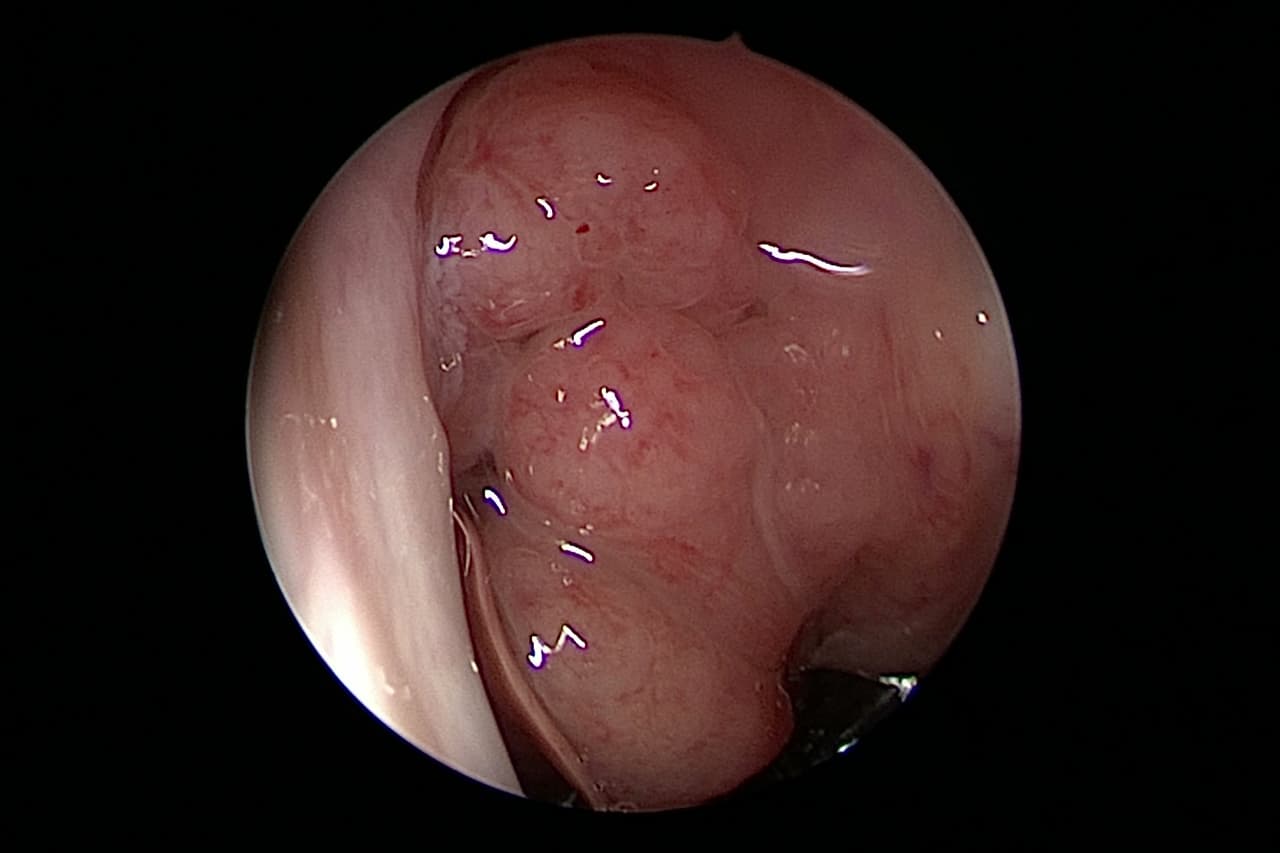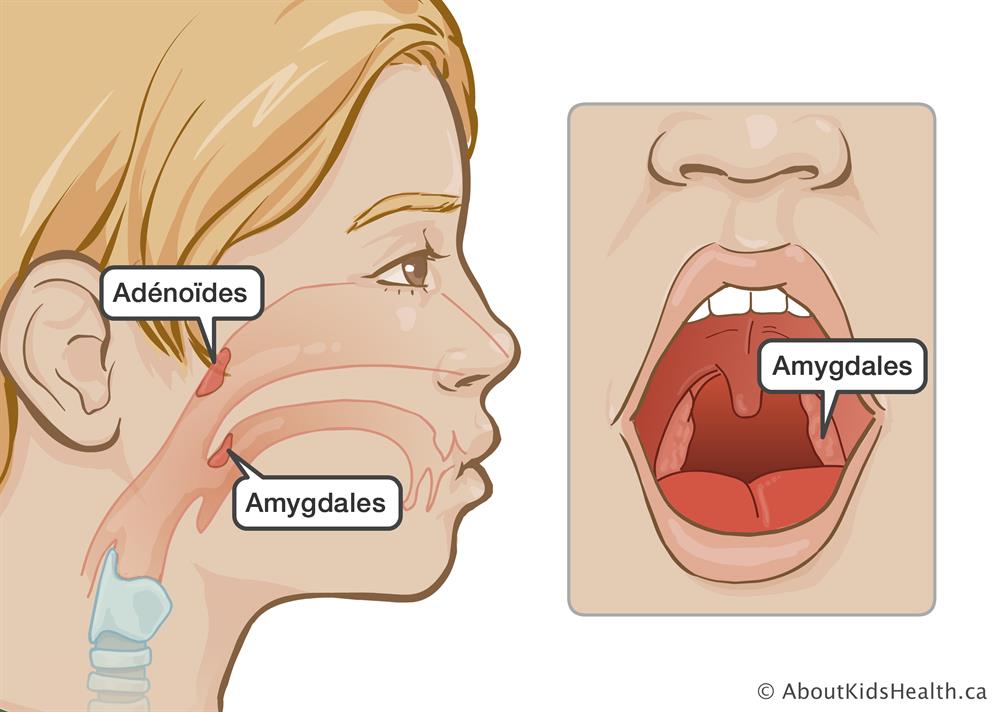Adenoidectomy
Surgery of the adenoids or adenoidectomy, is a surgical procedure consisting of removing the adenoids. The operation is performed under general anesthesia by an ENT surgeon, and requires a one-day hospitalization.
This operation is mainly performed on children aged 3 and over. However, it should be borne in mind that this tissue can grow back during childhood and we may have to operate again if the symptoms reappear. The indications for very young children must therefore be carefully considered. Adults are very rarely concerned.
Discover below the explanations on adenoidectomy of Dr. Delagranda, ENT surgeon in La Roche-sur-Yon, Vendée.
Objectives of adenoid surgery
Surgery for adenoids has a number of objectives:
- Restoring breathing through the nose.
- Limit the number of painful ear infections.
- Limit the number and duration of chronic ear infections and thus participate in maintaining good hearing (gesture then often coupled with a paracentesis or an application of aerator / trans tympanic drains).
- Facilitate the work of orthodontists and speech-language pathologists.
- Making an exceptional diagnosis of cancer pathology.

Adenoids
Adenoids are located in the nasopharynx or nasopharynx or cavum behind the nasal cavity. Polylobed mass consisting of lymphoid tissue, their volume is extremely variable depending on the person. Normally, they decrease in size after childhood and almost disappear in adulthood. Their function is to help the body form defenses against infections.This mechanism is especially useful in early childhood.

On the other hand, they can become a source of inconvenience due to too a large volume or repeated or chronic infections. The vegetations can hinder the ventilation of the middle ear which is done through the Eustachian tube whose orifice is in the cavum, causing chronic or acute otitis repeatedly.
Removing them does not pose an immune problem afterwards. The diagnosis of hypertrophy of the vegetations is made at any age simply in consultation with the help of a nasofibroscope, it is no longer necessary to resort to an X-ray
In which cases to remove vegetation?
- Vegetation that is too voluminous leads to a difficulty breathing through the nose day and night, with fatigue in children or adults. The patient then has his mouth open permanently to breathe.
- Vegetations that are too large and inflammatory or infected lead to acute otitis media with significant pain or chronic otitis so-called serous or seromucosal with hearing loss and school impact
- Too large adenoids can defeat orthodontic treatment and modify the dentofacial growth because the child does not breathe through the nose and keeps his mouth open at all times.
- Too large adenoids can defeat speech therapy because the child does not breathe through the nose and his soft palate is embarrassed. The child then speaks with a nascent voice.
- Adenoids in adults, especially if the appearance is unusual (color, tone, volume, bleeding) may be the site of a rare malignant tumor (lymphoma, pharyngeal carcinoma related to Epstein Barr virus)
The different stages of the intervention
The surgery
Vegetation surgery is performed in 15 minutes using a curette passed through the mouth under general anesthesia with or without tracheal intubation. The removal of adenoids is coupled with another surgery three times out of four such as removal of the tonsils or gestures on the eardrums such as paracentesis or placement of trans tympanic drains.
Postoperative convalescence period
The return home is done the same day as part of the outpatient hospitalization.The pain is very small. There may be small bleeding from the nose or blood-tinged sputum in the days that follow.
Absence from school for 48 hours
Post-operative care at home: The child will need to do regular saline nose washes to rinse the nose and cavum. A nasal spray may be prescribed for the postoperative period and mild analgesics
Scar: no visible scar.
Complications related to adenoid surgery
In addition to the risks inherent in any surgery with general anesthesia, adenoidectomy presents risks of rare complications:
- Hemorrhage during surgery
- Dislocation of teeth
- Small mouth wounds
- Inhalation if the child is not intubated (less and less common)
Please consult the explanatory sheet of the college of ENT on adenoidectomy for further explanations:
Frequently asked questions
Here is a selection of questions frequently asked by Dr Delagranda’s patients during pre-operative consultations for adenoidectomy.
Why remove adenoids?
When they are very hypertrophied causing obstruction to the passage of air from the nose and other complications: otitis with persistent hearing loss, voice changes, dentofacial growth disorders, permanently open mouth.
When to remove vegetation?
Between 2 and 7 years old for most patients
How does a vegetation operation take place?
Under general anesthesia with intubation, on an outpatient basis with some exceptions.
Can vegetation grow back?
Yes, because the surgeon is forced to leave some lymphoid tissue during the operation and external antigenic stimulation can lead to regrowth.
Fees and coverage of the intervention
The operation of adenoids is taken into account by health insurance. Contact your mutual insurance company to find out how to cover any fee overruns.
Do you have a question? Need more information?
Dr Antoine Delagranda will be happy to answer any questions you may have about vegetation surgery. Dr Delagranda is a specialist in ENT surgery at the Clinique Saint Charles in La Roche-sur-Yon in the Vendée.
ENT consultation for adenoidectomy in Vendée
Dr Antoine Delagranda will be happy to answer any questions you may have about vegetation surgery. Dr Delagranda is a specialist in ENT surgery at the Clinique Saint Charles in La Roche-sur-Yon in the Vendée.

